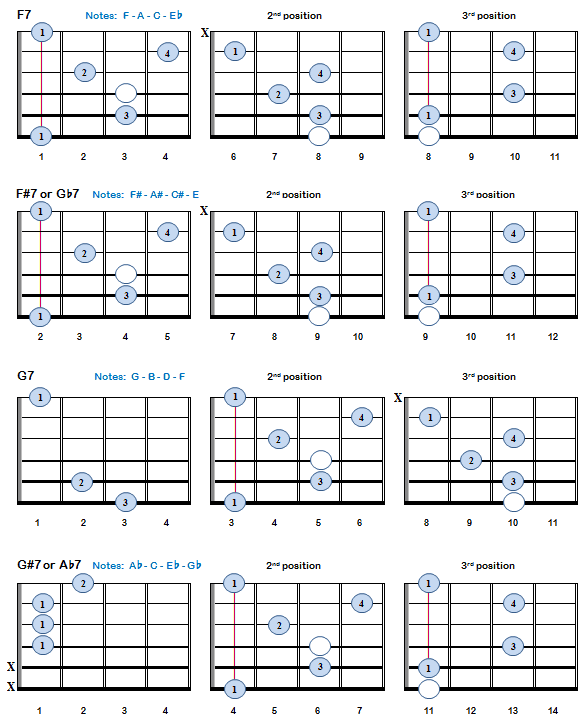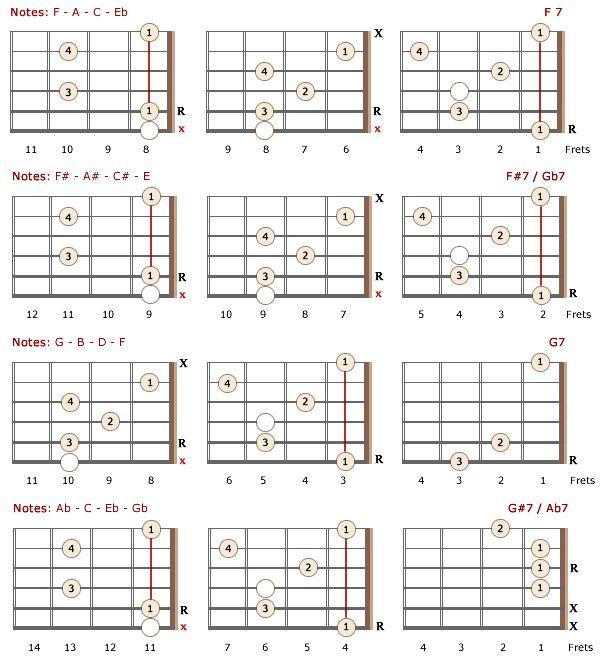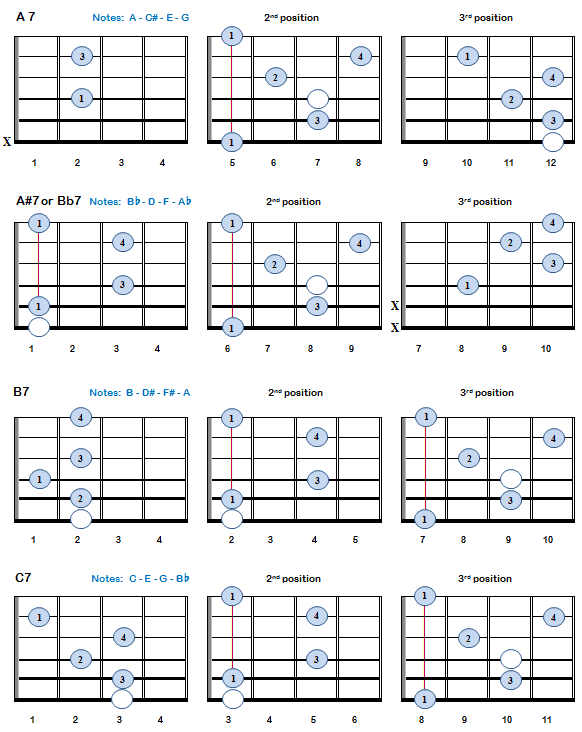
Remember that empty circles are optional notes. If you do play them, you will have to alter your finger positions in most cases. The following example will illustrate this.
B7 (1st position) is commonly played without the finger on the 2nd fret bottom E (empty circle). If you leave your finger off, you will need to avoid playing that string, as E is not part of a B7 chord (B - D# - F# - A).
If you choose to play that note, you will be playing an F#, which is part of the B7 chord (F# is also being played on the 1st string, 2nd fret with the fourth finger).
If you do play the extra note, you will have to use your second finger to cover both strings (2nd fret, 5th & 6th strings) as you will have run out of fingers!
Where barring occurs with an optional note, e.g., C7 - 2nd position, simply barre the whole 3rd fret with the first finger.
Left Handers
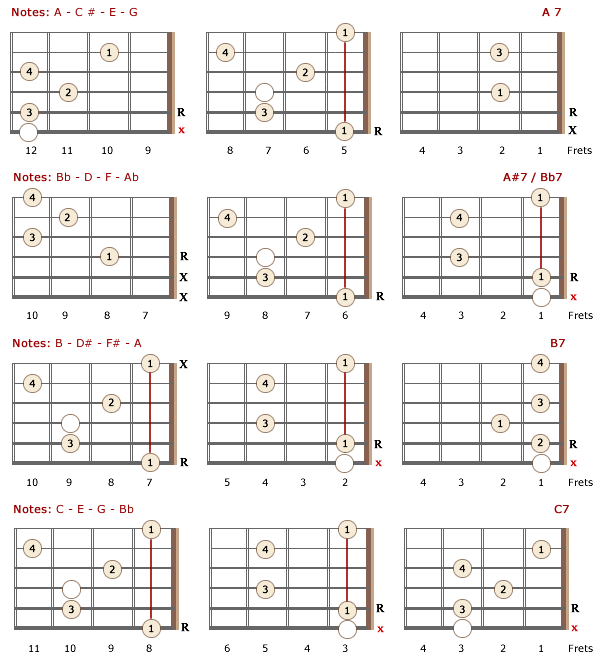
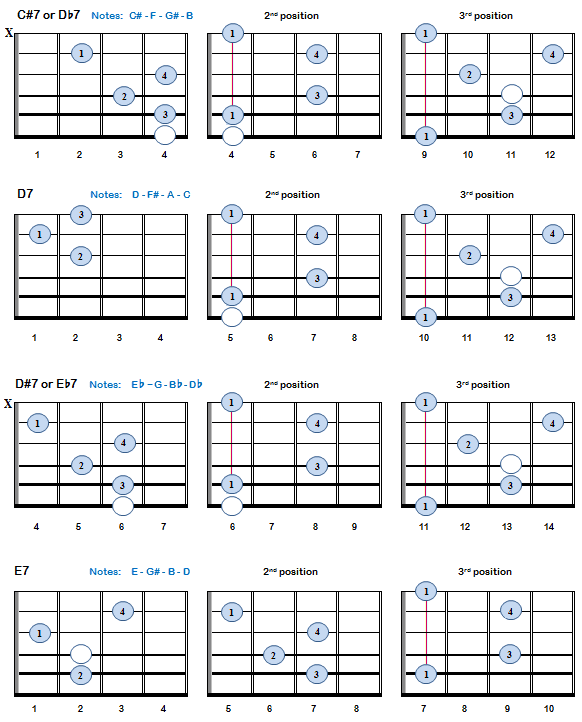
Please note that the E7 chord - 1st position, can be played with fingers 1 and 2, however the 3 finger option 1, 2 and 4 gives the chord more presence. You can also add the optional note depending on your preference.
Beginners tend to prefer the 1,2 finger option due to ease, but as you gain experience, the 1,2, 4 option definitely sets the chord apart ... you are adding another D-note 1 octave above the open D-string which makes the chord a 7th (leading tone), giving the 7th an extra strong presence.
If you find this a little too strong you can add the optional note (E) buffering the intensity of the added 7th.
Play an E chord then play the 1, 2 finger E7
Play an E chord then play the 1, 2, 4 finger E7... notice the difference.
Left Handers
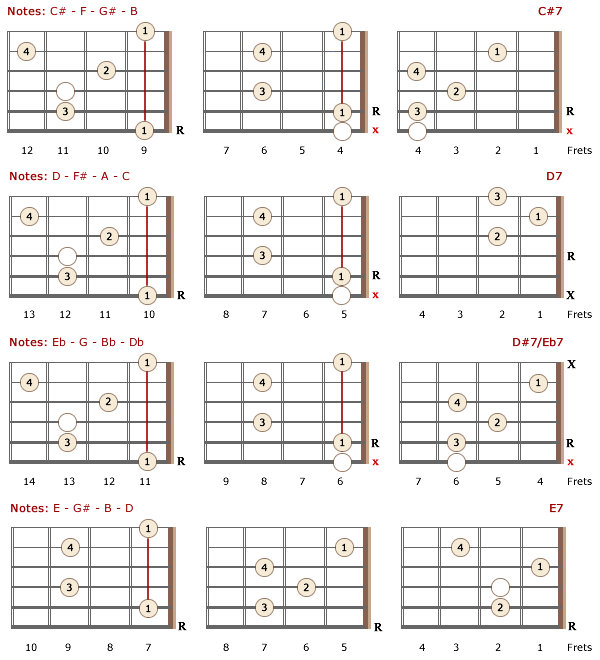
↓ Left Handed dom7 Chords - Part 2

